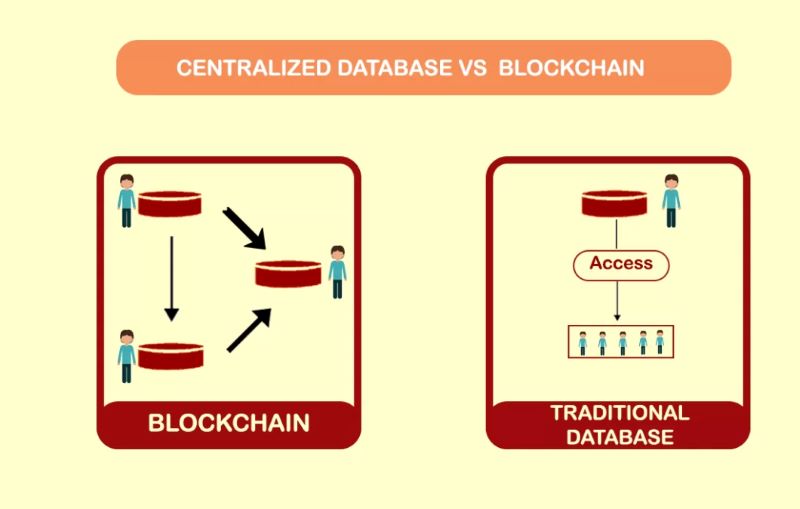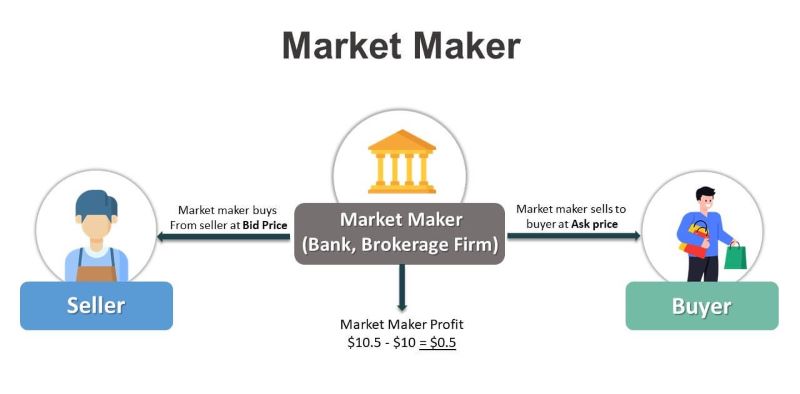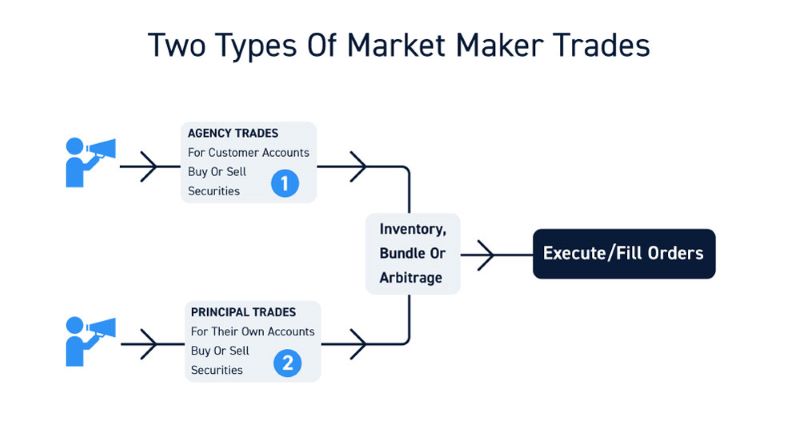Curiosity piqued about what is distributed ledger technology in crypto? You’re in the right spot. Dive into the nuts and bolts of this transformative tech. Here, we strip away the complex jargon and make the intricate world of crypto ledgers crystal clear. Get set as we uncover how this game-changing innovation is remapping the landscape of digital transactions. From secure cryptos to smart contracts, we’ve got the lowdown on why DLT isn’t just another buzzword but a revolution in the making.
Unraveling the Basics of Distributed Ledger Technology in Crypto
Understanding Distributed Ledger Technology (DLT) in Cryptocurrency
In the world of crypto, DLT stands for more than just an acronym; it’s a revolution. Crypto runs on a shared database known as a distributed ledger. Unlike traditional systems, where one party holds the records, everyone has a copy in DLT. This means any change must get approval from multiple places, ensuring accuracy and trust.
How DLT Works: The Fundamentals
Now, let me paint a picture of DLT in action. Imagine a group chat where everyone knows when someone sends or receives money. This is like DLT in cryptocurrency. Each person in the chat is a node, or a point in a vast network. When a transaction happens, it spreads across the nodes. They work together to verify the deal. It’s like a mutual agreement that what’s done is right and fair.
With DLT, there’s no need for a middleman to keep tabs on transactions. Everything is out in the open, and changes are tough to make once agreed upon. This reliability is what makes blockchain technology a major draw in the crypto universe.
The heart of DLT is a smart system called blockchain. This is where the magic happens. Think of it as a chain of virtual blocks. Each block holds a list of transactions. Once a block fills up, it links to the previous one, creating an unchangeable chain.
Now, not just any transaction can hop on the blockchain. They must pass through a process known as consensus mechanisms. These are rules that make sure all nodes agree before adding a transaction to the blockchain. This prevents any funny business and keeps the network secure.
Decentralization is another key term in DLT. It means no single point has full control. Instead, power spreads across the network. This makes it very tough for anyone to tamper with the data, adding an extra layer of security to your digital coins.
Types of distributed ledgers include systems that are open to all, called permissionless, and those with restricted access, known as permissioned. Each type serves different needs and offers different levels of privacy and control.
Knowing how DLT works helps us see just how different it is from traditional databases. Here, instead of one person or group calling the shots, everyone has a say. This gives rise to a new form of trust in technology.
In crypto, this trust is essential. It allows users to feel at ease with transactions, knowing they’re secure and validated by a network of their peers. It makes way for a financial landscape where transparency and collaboration are the norm.
DLT is a joint effort of math, technology, and community. It ensures that every coin moved, every deal made, is recorded in a way that’s not only clear for all to see but also nearly impossible to fake. This is why DLT is a cornerstone of cryptocurrency and a promise of a more open, efficient, and transparent financial future.
The Core Components of DLT and Their Functions
Exploring Consensus Mechanisms and Types of Distributed Ledgers
In the world of crypto, DLT stands for a special database. It’s like a notebook shared across many computers. Each computer has a full copy. This means changes made in one place show up in all the copies. This way, everyone agrees on what’s written down, which is key for trust in digital money like Bitcoin.
What makes sure everyone agrees? That’s called a consensus mechanism. It’s a way to make sure all copies are the same across the whole network. Bitcoin uses a kind called “Proof of Work.” Computers work hard to solve puzzles. The first to finish gets to add new info to the ledger. There are other types too, like “Proof of Stake.” Here, owners of the digital money help to check transactions.
There’s not just one kind of distributed ledger. Besides blockchains, there are others like DAGs and Holochains. Some ledgers are open to everyone. Others only let certain people in. This affects who can join and how the ledger is kept up to date.
Deciphering Cryptographic Hashing and Its Role in DLT Security
Crypto uses secret codes to keep things safe. These codes come from a trick called “hashing.” When you hash info, it scrambles it up so much that you can’t tell what it was before. It’s like using a secret decoder that only works one way. If you change even a tiny bit of the info, the hash changes a lot.
Now, these hashes help to lock everything up tight. They make sure that past entries in the ledger can’t be changed. This is because each entry is linked to the one before it using these hashes. If someone tries to mess with it, the hash code won’t match up. Then, everyone will know something’s wrong.
This hashing is why ledgers in crypto are called “immutable.” Once something is written down, it can’t be undone. This is super important for keeping everyone’s money safe.
In a nutshell, DLT in crypto relies on shared notebooks that use special math puzzles to agree on what’s true. These notebooks use secret codes to make sure no one cheats. This is how DLT creates trust and keeps digital money secure.
Comparing DLT to Traditional Systems and Identifying Unique Advantages
DLT versus Traditional Databases: What Sets Them Apart?
Think of traditional databases like a notebook. One person holds the pen. They write and change what’s on the page. But in the world of crypto, distributed ledger technology flips the script. With DLT, it’s like everyone has their own pen. Everyone writes together, agreeing on what goes on the page. Here, every participant has a copy of the ledger. This is just the start of how DLT sets itself apart.
In blockchain technology, the most famous type of DLT, these pages form a chain. Each page, or block, links to the previous one. They forge a history that you can’t easily wipe out. This makes them immutable ledgers. Once data is in, it’s like carving into stone. It stays there. Understanding distributed systems like this is key to knowing why they are safe bets. Unlike traditional systems, they don’t have a single failure point. If one copy gets destroyed, many others are still out there.
Benefits of Immutable Ledgers and Smart Contracts in Crypto
Now let’s talk smart contracts. These are like deals that self-execute when conditions meet. No middlemen, just trust in code. It’s one of the smart contract advantages that make crypto tick.
Think of a vending machine. You put money in, you get a snack. No one needs to check if you paid; the machine does it all. That’s smart contracts. They cut out the waiting and the people in the middle. It’s just you and the contract, quick and easy.
These ledgers are out in the open. Everyone can see what’s going on. They foster ledger transparency in crypto dealings. This openness helps everyone trust the system. Blockchain and DLT difference really comes down to the ways you can use them. Blockchains are a type of DLT, but not all DLTs are blockchains.
Think of consensus mechanisms. These are rules about how changes can happen. They make sure everyone agrees before the ledger changes. Think of them as a class agreeing on an answer before telling the teacher. This helps keep things fair and secure.
With increased security and shared control, DLT is shaping finance, and more. In areas like payments and asset management, DLT excels. It makes transactions fast and keeps records straight. It also plays nice with other systems, which is interoperability in DLT.
This technology isn’t just good; it has the power to change how we do everything. By bringing us together and keeping records straight and safe, DLT could lead us into a new era of doing business. It’s a system of trust, built on the trust of its users. This is the heart of DLT in cryptocurrency: a shift from trust in people, to trust in the system itself.
The Future of Digital Transactions Powered by DLT
DLT in Supply Chain Management and Payment Systems
Blockchain is reshaping how we track goods and money. In supply chains, DLT makes each step clear to see. Each product gets a digital footprint. We can follow it from start to end. This cuts fraud and ups trust. It’s a big win for buyers and sellers. DLT also speeds up payments. It strips out middlemen, taking us from days to minutes for payments to clear. This is possible because everyone shares a single view of the deal.
Now, what is DLT? DLT is a database that many people can access, share, and record. It’s spread across multiple spots, linked to each other by peer-to-peer networks. If you think of it as a huge team game, where everyone must agree on each move, you’ve got the idea. This ensures that all copies update with new info at the same time. DLT is safe too. It uses complex math called cryptographic hashing. Think of this as a secret code that keeps our info safe.
The Role of DLT in Asset Tokenization and Identity Verification
With DLT, we can turn real assets into digital tokens. This is called tokenization. Say you have a house. You can split it into tokens to sell shares to many people. They own a piece of your house as a digital token. This is huge for folks who couldn’t buy big assets before. DLT also helps us check who is who online. Your digital ID lives on the DLT. It’s hard to fake because of the ledger’s security features.
What’s a smart contract, then? It’s a deal that lives on the blockchain. It runs by itself when terms are met. No people needed to say “Go.” Let’s say you rent a place to stay. With smart contracts, you get the key when your payment hits. The owner is happy; you’re happy. No waiting for a human to make it happen. This is DLT making our lives smoother.
Now, some folks worry about how much power DLT uses. But good news, many DLT types work to use less energy. This means we can enjoy its perks without hurting our planet.
So, you see, DLT is not just a buzzword. It’s a powerful tool. It changes how we buy, sell, prove who we are, and share stuff. The best part? This is only the beginning. As we find new ways to use DLT, our digital world will get even better.
In this post, we dug into the meat of Distributed Ledger Technology or DLT. First, we tackled what DLT means in crypto. Then, we broke down how DLT works, looking at consensus methods and the role of hashing in security.
We compared DLT to old-school databases, noting how DLT stands out with unchangeable records and smart contracts. We ended with a peek into DLT’s future in how we track goods, manage money, and even prove who we are.
DLT isn’t just tech speak; it’s changing how we trust and verify in our digital world. It’s the backbone of a crypto system that’s secure, open, and ready for tomorrow. Keep an eye on DLT – it’s the quiet force reshaping our digital dealings.
Q&A :
What is Distributed Ledger Technology (DLT) in Cryptocurrency?
Distributed Ledger Technology (DLT) is a digital system for recording transactions of assets where the transactions and their details are recorded in multiple places at the same time. Unlike traditional databases, DLT has no central data store or administration functionality. In cryptocurrency, this means that the ledger is spread across a network of computers, making it highly resistant to cyber fraud and protecting the integrity of the ledger’s record of digital currencies.
How Does DLT Differ from Blockchain in Crypto?
While blockchain is a type of DLT, not all distributed ledgers necessarily employ a chain of blocks to provide a secure and valid distributed consensus. Blockchain arranges data into blocks, which are chained together in an append-only mode. On the other hand, DLT encompasses a broader range of technologies that can record transactions in a distributed manner, potentially without a block structure, hence offering flexibility in how data is structured and consensus is reached.
Can DLT Be Hacked Like Traditional Databases?
One of the main advantages of DLT is the difficulty of hacking it compared to traditional databases due to its distributed nature. While traditional databases can be a single point of failure, DLT would require simultaneous compromise of a large majority of nodes within a network to effectuate a successful hack. Despite this, it’s important to note that nothing is completely immune to hacking; there can be vulnerabilities in a DLT network, particularly in less decentralized or poorly implemented systems.
What Makes DLT Essential for Cryptocurrencies?
DLT is crucial for cryptocurrencies as it ensures a secure, transparent, and immutable record of all transactions without the need for an intermediary. It enables trustless interactions between parties, which is key for digital currencies, where trust and verification are paramount. This technology also enables cryptocurrencies to achieve decentralization, another core principle of most cryptocurrencies.
What are the Advantages of Using DLT in Cryptocurrency Transactions?
The advantages of using DLT in cryptocurrency transactions include improved security, as records are immutable and cannot be altered retroactively. It also reduces costs by eliminating the need for middlemen and increases transaction speed due to its decentralized nature, which permits direct peer-to-peer transactions. Additionally, it enhances transparency, allowing all network participants to track and verify transactions.






